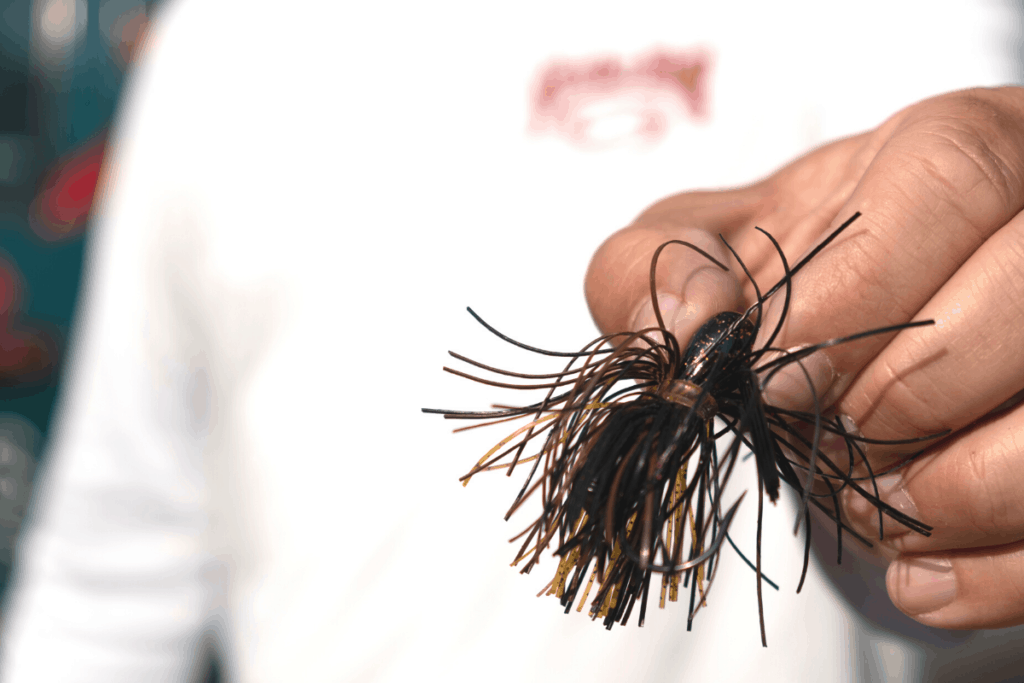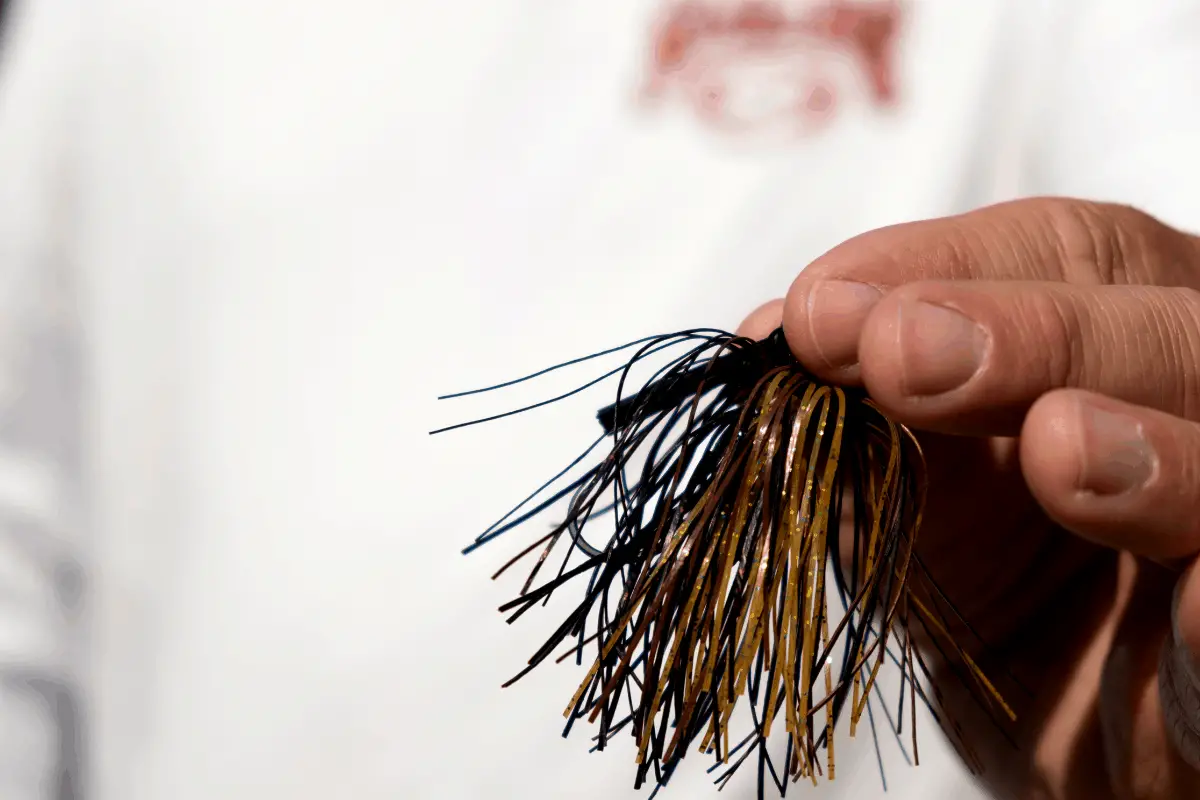Bass anglers love to modify their lures. Some add color, others change out the hooks, and some trim the skirts on jigs. The question is why cut the strands on a jig and does it make a difference?
Trimming the skirt on a bass jig can help anglers match the forage, speed up the rate-of-fall, and give the jig skirt more flare to look life-like.
Ask 100 die-hard jig anglers how they modify the skirts on their lures and you will find there are lots of methods, ideologies, and reasons. This article will cover some of the more popular answers.
The Bass Jig
The flipping or pitching jig just may be the lure responsible for more money won in bass tournaments than any other.
It catches bass all year and in a variety of conditions.
Dirty water. No problem.
Thick cover. No problem.
Clear, deep lakes. No problem.
The bait is so synonymous with tournament wins that iconic anglers like Denny Brauer have a hard time shaking the moniker jig fisherman – not that they would want to.
Always Looking for an Edge
The top athletes in any sport look for any competitive edge they can find. This constant tinkering has been responsible for many innovations in the bass fishing world.
One common alteration jig enthusiasts employ is trimming the skirt of the lure.
Why?

#1: Matching the Forage
One of the best characteristics of a jig is that it can match a wide range of forage species.
It excels not only at mimicking crawdads crawling along the lake or river bed, but it also can be used to match baitfish and bluegills. Jigs come in a massive range of colors that offer anglers the opportunity to make their lure look like anything that can be found in the water.
If the forage being portrayed is large, then leaving the full skirt is a great option. If the opposite is true, then trimming the skirt and trailer down to better represent the size of the bait is an excellent move.
#2: Rate-of-Fall
The rate at which a lure falls through the water column can be the difference between a marginal day on the water and a great one.
As a general guideline, anglers like their lures to fall a little quicker when the water is clear and slower when the water clarity gets murkier. Bass get a good look at a lure in clear water and often the speed of the drop can get the bass to react – even if they are not currently in the mood to feed.
In dirty water, bass rely less on sight and need to sense lures with their lateral lines. If an angler can get the jig to fall slower our favorite predator has a better opportunity to locate and engulf the bait.
Trimming the skirt shorter removes some of the bulk. This eliminate resistance and the lure falls quicker because it is more streamlined.

#3: More Flare
Any time a lure can look more life-like in the water the odds of getting a bite go way up.
Trimming the skirt on a jig can help to achieve this critical component of using artificial baits. When the skirt is trimmed, the strands have less weight and therefore are more apt to “flare” outward.
When the jig is sitting still in the water the added action to these shorter strands can trigger bites. This tactic works best in water that has some visibility to it, but is still worth the effort in dirtier water as well.
We need to remember that bass will often get real close to a lure and observe it before deciding to inhale it or not.
A traditional skirt trim across the bend of the hook will give the lure this added flare, but some anglers prefer to trim the skirt at an angle from the bend of the hook back towards the head of the jig.
This technique reshapes the jig and can give the lure a more streamlined silhouette. When imitating baitfish like minnows and shad a slimmer profile can fool wary bass into trying out your artificial offering.
Final Thoughts
Lures do an excellent job of attracting bass right out of the package, but some simple modifications can be the key to more bites.
This is especially true on those tough days when it is hard to get the bass to commit.
Whether angling for cash or just fun-fishing on the weekend, trimming the skirt on a bass jig can help anglers match the forage, alter the rate-of-fall, and increase the life-like action of the lure.
Tight lines. Be safe and make sure to encourage someone today. You never know how you may change their life forever.
Isaiah 6:8

